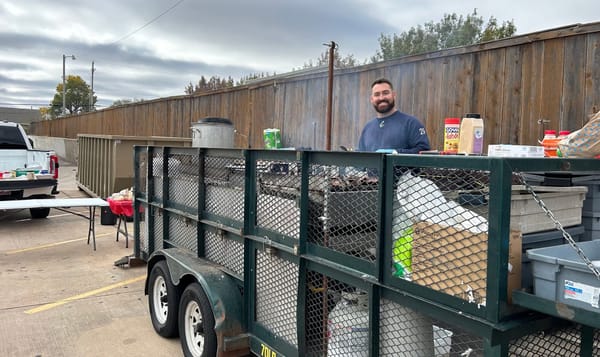How Southwest Oklahoma schools are addressing security concerns in a world of growing threats
While updated security standards for schools have slowly been progressing for years now, recent spikes in public threats have created a trend toward stricter school security measures.

On top of having to plan curriculum, grade, and uphold standards the staff of today's schools also have to be able maintain student safety against a number of possible threats. With so many potential occurrences to now be prepared for, schools are having to take additional measures to protect students.
While updated security standards for schools have slowly been progressing for years now, recent spikes in public threats have created a trend toward stricter school security measures. There’s been much debate over what the appropriate way to better security is. Some schools regularly update to the latest trends in technology for security, while others invest in full time Resource Officers, if not both.
Regardless of how security is approached, it costs considerable amounts of money. To afford these necessary advancements, most schools in Oklahoma must either rely on private donors or obtain grants. Especially in Southwest Oklahoma where a lot of schools are in small, rural towns, funding’s not always easy to come by and grants are only available in limited quantities, schools often have to plan ahead for security.
Chad Hance, Superintendent of Cache Public Schools, said Cache schools have been fortunate enough to receive Security Resource Officer (SRO) funding to improve school security for the last couple years. While Cache does have a Resource Officer on site, Hance was able to use SRO funding to enhance other areas of school security as well. Hance said Cache schools have received about $90,000 from the state for security allocation, so far. The school did have to cover some costs with money from the school budgets, but the funding was able to cover multiple upgrades.
One example of the security improvements Cache has made is the ballistic film they had added to school windows. The film slows down intruders trying to break into the building through windows, giving first responders time to arrive. In addition, Cache recently incorporated Stryker badges which essentially function like advanced walkie talkies with alerts and GPS abilities. The Stryker badges allow for quick and wide-spread communication with other staff, the security officer, and first responders.
“We take the safety and security of our staff very seriously,” Hance said. “All the schools right now have security on their mind all the time.”
On the other end, Lawton Public Schools, a larger school system in Southwest Oklahoma, just recently made security measures to school grounds in an attempt to make schools harder to penetrate. According to LPS Superintendent Kevin Hime, during his State of Education update at the Chambers Luncheon in early August, this includes recently installed security fences. It also includes heightened security efforts for sporting events and the recent controversial cell phone policy.
The cell phone policy began being enforced over the last couple weeks. In response to Senate Bill 139 which prohibits personal device use during school days, the policy led to students in LPS in sixth through twelfth grade having to put their smart devices like tablets, phones, and watches in Faraday bags for the duration of the school day. While intended to improve students’ academic success and eliminate distractions, the bill also eliminates potential security breaches.
On the other hand, several parents have expressed concerns over some of the potential downfalls of the new policy. These include the costs to schools as well as students’ families, and the risk of threats in the school and students not having a way to communicate about it.
Krystal Britz, a parent whose kids attend school in Elgin, said Elgin’s approach to the policy is milder than Lawton’s. She said the school requires students not to have their devices out during school, but they can remain in students’ backpacks. She said she doesn’t generally communicate with her kids through devices during the school day because she doesn’t want to disrupt their education but appreciates knowing they have the ability to reach out if an emergency situation were to occur.
“When I brought my safety concerns to light, I felt heard and saw action. Of course, every district has its problems but safety hasn’t been a worry for me in Elgin,” Britz said.
Every school in the nation is considering what options they have to address security concerns and carry out their greatest responsibility: protecting the students. However, schools in Southwest Oklahoma are having to be crafty with what funds and local resources they have to do this.
The funding used for Security Resource Officers over the last few years has seen notable spikes in popularity. However, larger schools and schools in cities with more resources have an easier time incorporating such upgrades than schools that most depend on grants, private donors, or even the means to transport such resources.
One thing school officials say can be done to improve emergency preparation starts with the families of students. If parents discuss the potential threats and how kids should respond to them, students are more likely to feel prepared and informed during potential security threats, which could result in life-saving responses. While ultimately security is on the school districts, in today’s world there are never too many precautions to take in consideration of the number of threats.




